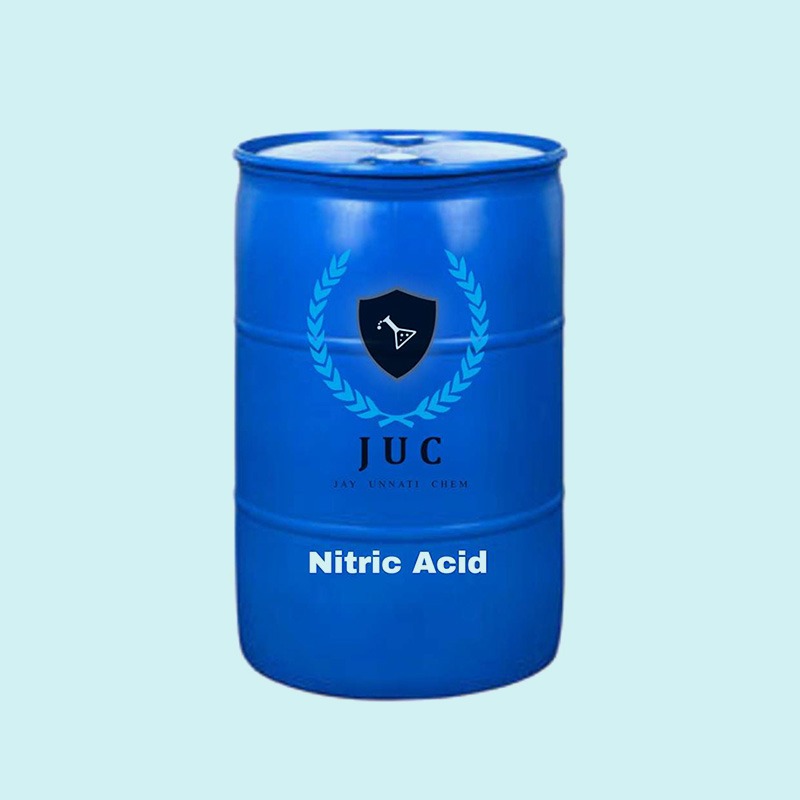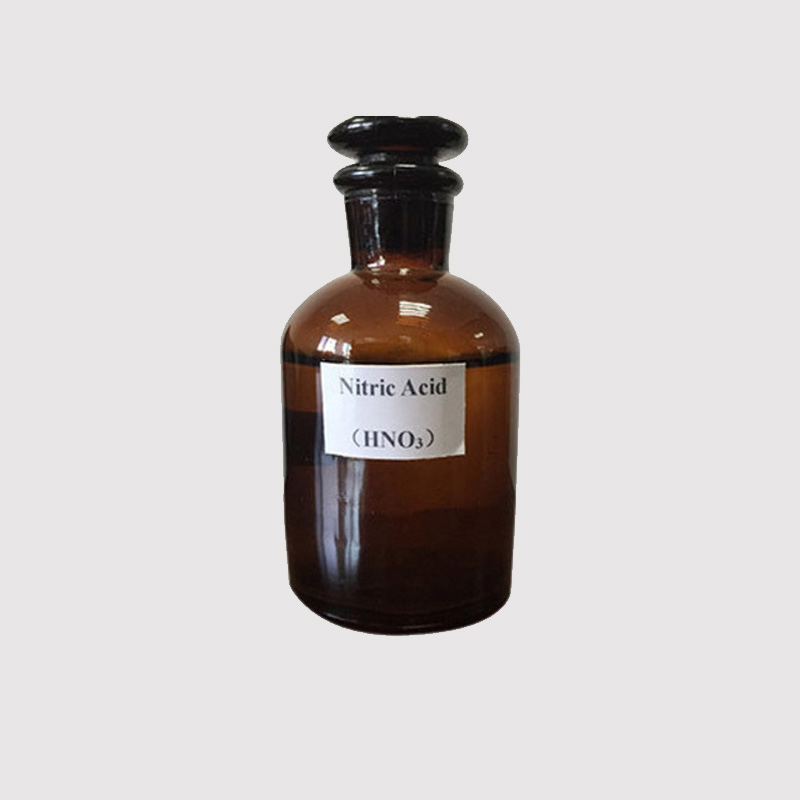Nitric Acid: Properties, Uses, and Production Nitric acid (HNO₃) is a strong, highly corrosive acid that plays a critical role in various industrial processes. It is colorless in its pure form but often appears as a yellow or reddish-brown liquid due to the presence of nitrogen dioxide (NO₂). It is an inorganic acid, and its aqueous solution is highly acidic, with a pH of less than 1.Chemical Properties and Structure Nitric acid is a monoprotic acid, meaning it donates one proton (H⁺) in reactions. Its molecular structure consists of a central nitrogen atom bonded to three oxygen atoms, one of which is double-bonded, and the other two are single-bonded to the nitrogen, with one oxygen atom carrying a negative charge (O-N=O). It is a highly reactive molecule, capable of acting both as an oxidizing agent and a proton donor. Production The industrial production of nitric acid is primarily through the Ostwald process, which involves the oxidation of ammonia (NH₃) to nitrogen monoxide (NO) using a platinum catalyst. The nitrogen monoxide then reacts with oxygen to form nitrogen dioxide (NO₂), which is absorbed in water to produce nitric acid. This process has been the cornerstone of nitric acid production since the early 20th century. Uses Nitric acid is essential in the manufacture of fertilizers, particularly ammonium nitrate, which is widely used in agriculture. It is also a key component in explosives, such as TNT (trinitrotoluene), and in the production of various chemicals, including nitric oxide, nitro compounds, and dyes. Furthermore, nitric acid is used in metal etching, particularly for the oxidation of stainless steel, and in the refining of gold and other precious metals. In laboratory settings, nitric acid is used as a reagent in various analytical procedures, including the preparation of solutions for titrations and the digestion of organic and inorganic materials. Safety Considerations Due to its highly corrosive nature, nitric acid must be handled with care. It can cause severe burns upon contact with skin or eyes and releases toxic nitrogen oxides when exposed to heat or when mixed with other chemicals. Proper safety equipment, including gloves, goggles, and well-ventilated areas, is essential when working with nitric acid.
Nitric Acid
| Cas No : | 7697-37-2 |
| Formula : | HNO₃ |
| Hsn Code : | 28080010 |
| Form : | Liquid |
| Boiling Point : | 120.5 °C |






Reviews
There are no reviews yet.